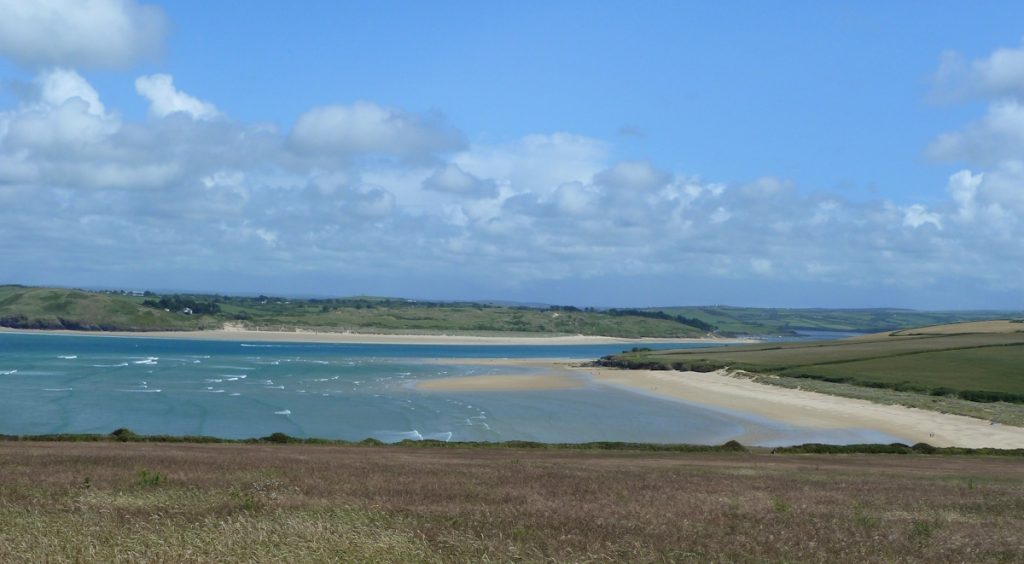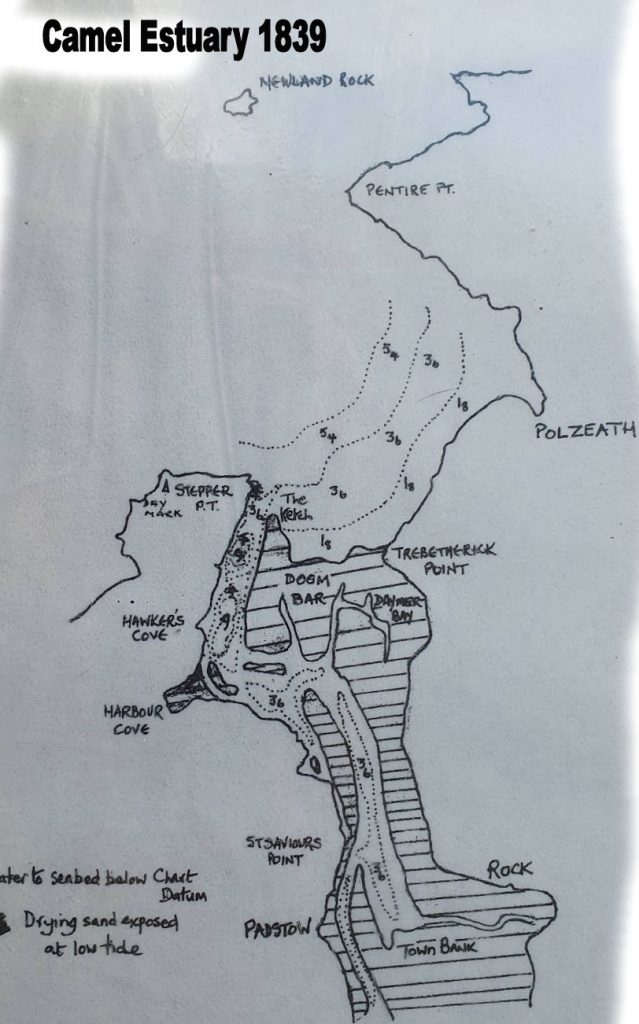
The Doom Bar is a shifting sandbank at the mouth of the Camel Estuary near Padstow, long feared by mariners. Formed where the Atlantic meets the river’s outflow, it partially blocks the harbour approach and has caused hundreds of shipwrecks — with estimates ranging from 400 to over 600 vessels wrecked, stranded, or foundered. Its name, ominously suggesting fate or ruin, reflects its deadly reputation. Historically, the bar lay farther west, but over time has migrated inland and eastward, reshaped by tides, storms, and coastal erosion. Admiralty charts from the 18th century onward reveal how its structure has become more fragmented and unpredictable.

From the The National Coastwatch Institution Website
Yet many locals claim the Doom Bar was born not of nature, but of supernatural wrath. In Cornish legend, a young fisherman named Tristram Bird mistook a mermaid for a seal and shot her. With her dying breath, she cursed Padstow and hurled great handfuls of sand from the seabed, forming the bar to doom passing ships. The tale stuck — and in a sense, so did the curse. The Doom Bar not only ended local shipbuilding but also left a legacy of tragedy. As maritime historian Clive Carter wrote, the bar’s history is one of “tragedy and heartbreak, tempered by the unquenchable heroism of the Padstow men.”
Today, though still a navigational hazard, the Doom Bar is part of what makes Padstow’s coastline so distinctive. Composed largely of crushed mollusc shells, it now lies near the centre of the estuary, creating ever-shifting channels and shoals. Its presence enhances the vivid colours and patterns of the water, changing with every tide and catching the light in ways that mesmerise visitors. Despite its dark past, the Doom Bar has become an iconic part of this beautiful and storied stretch of Cornwall.